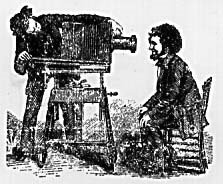A Joyous Eastertide
Story and Illustration by Phillip Hester
The Plot: In "A Joyous Eastertide," a man tells his 25 -year -old daughter about his childhood. When he was a young boy, his mother committed suicide, leaving him all alone with his father. The boy’s father marries a woman with Tourette’s Syndrome. When the father dies from the influenza, the boy is left in the care of his new stepmother. During this time, the boy has terrible nightmares and would sleep in the same bed with his stepmother. Over the years, the stepmother takes very good care of the boy. He would grow up to be an assistant medical examiner. One day, he realizes that woman he is examining had neatly trimmed her pubic hair into a heart. Instead of finding this situation amusing, he begins to remember his stepmother. This woman on the examining table had chosen to ignore the embarrassment and had given this simple gift to someone. This reminds him of his stepmother who had taken care of him, even though he wasn't even her real son.
The themes and ideas of “A Joyous Eastertide” include family, sacrifice, love, acceptance, and death. The stepmother took care of this boy who wasn't even her own son. She chose to love him and treat him as if he were her own child. Similarly, the woman on the examining table sacrificed her embarrassment and made the heart in her pubic hair.
The visual style: There is a recurring theme of lines in this story. On the legs of the Jesus statue, there are cracks in the feet that the boy thought was the blood from Jesus’ wounds. Again, we see lines when the boy is lying in bed with his stepmother and he is examining her hands. He saw those lines as a “net of her abiding kindness.” Lastly, we see lines in the feet of the woman being examined. These lines reminded the man of the lines in his stepmother's hands. Another visual technique that this story has is the three panels showing the face of the stepmother as she scrunches up her face. Each time, the first panel has the drawing of the woman with a soft face, and the second is always the scrunched face. The last of the three panels always has the same soft face seen in the first panel.

No comments:
Post a Comment